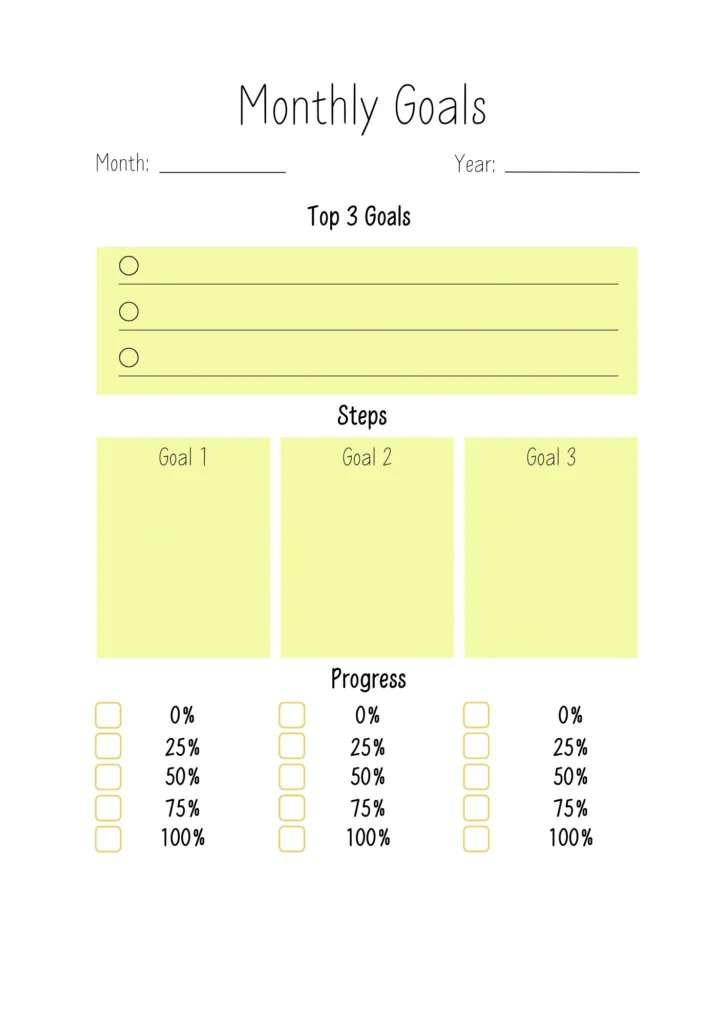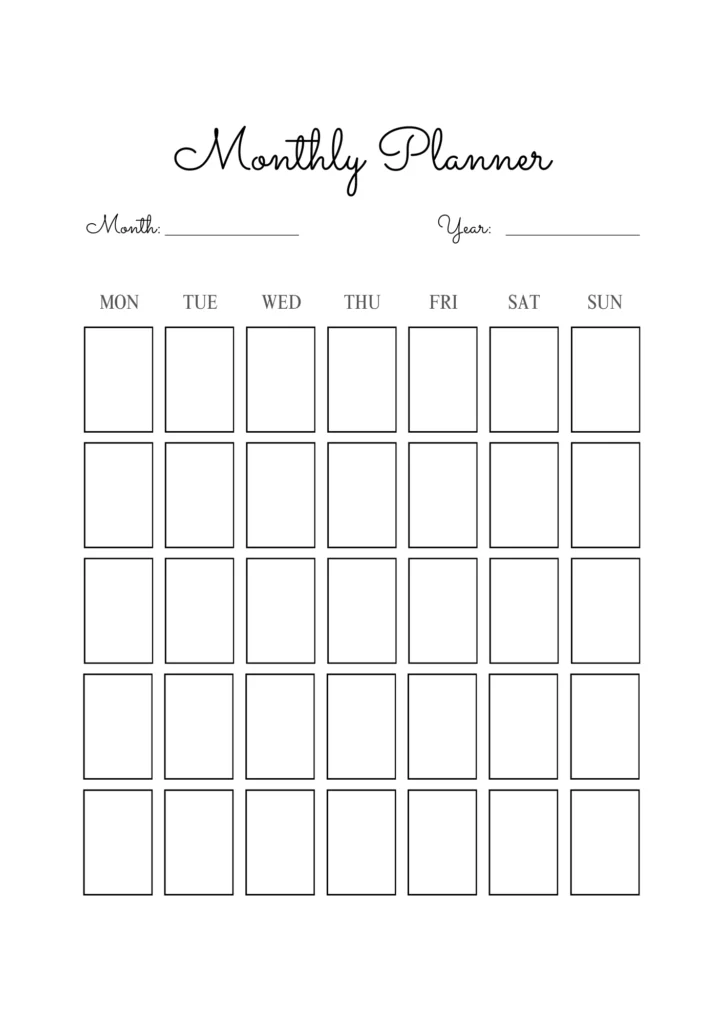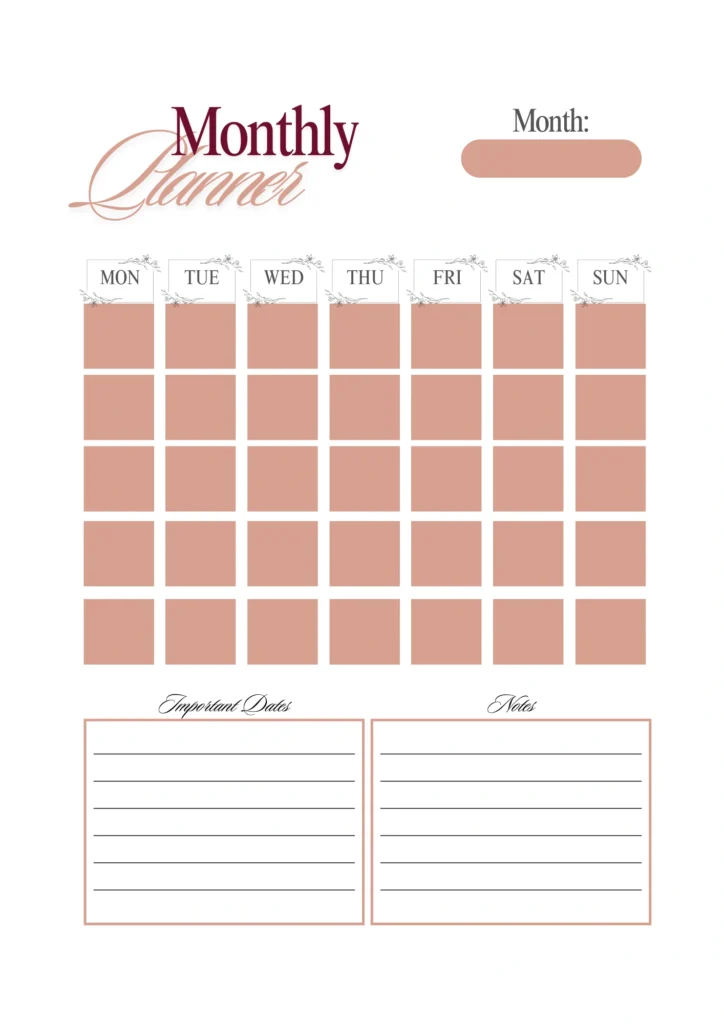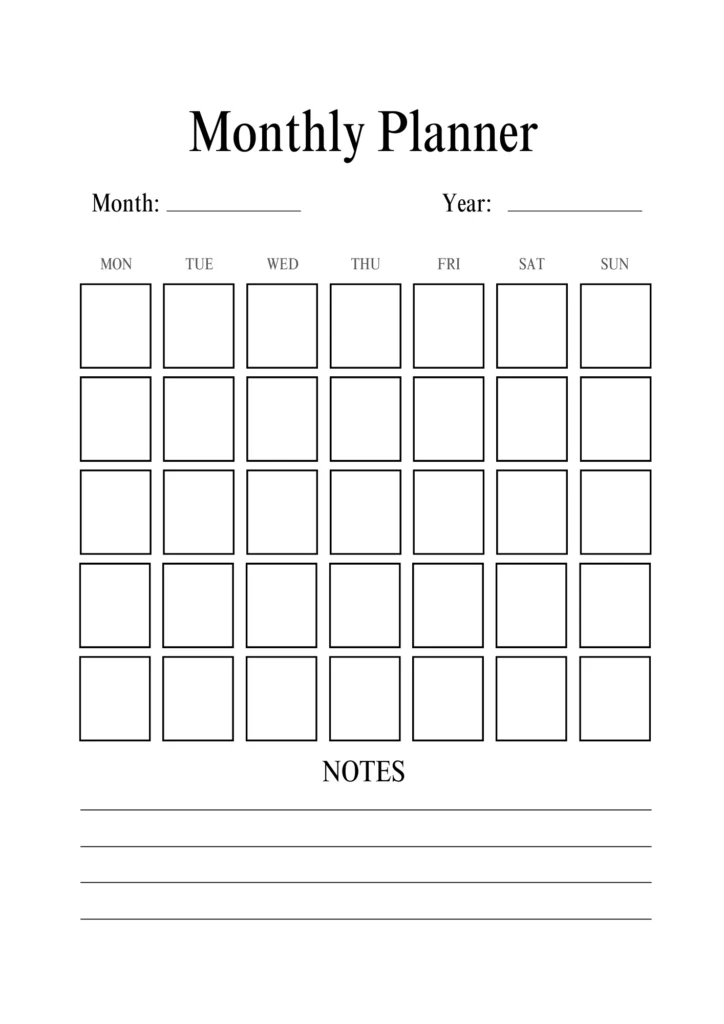A monthly tracker printable offers the perfect solution for managing long-term goals without getting overwhelmed by daily details. When you use a tracker consistently, you gain the big-picture perspective needed to balance multiple priorities while staying focused on your most important goals. Here’s how to make this powerful planning tool work for your lifestyle and goals.
Why Monthly Tracking Works Better for Organization
Monthly trackers bridge the gap between weekly planning and yearly goal-setting, giving you just the right amount of structure to stay organized without micromanaging every detail. Unlike daily planners that can feel overwhelming, monthly tracking helps you see patterns, plan for major events, and maintain momentum on important projects.
The physical nature of a monthly tracker also offers advantages over digital planning tools. Writing goals and appointments by hand helps you remember them better, while having a visible tracker on your wall or desk provides constant gentle reminders without the distractions that come with checking your phone or computer.
How to Choose the Right Format for Your Needs
Your tracker should match both your planning style and the complexity of your schedule. Some people thrive with detailed goal-setting sections and habit trackers, while others need simple calendar layouts with minimal additional features.
Assessing Your Planning Style
Consider your current planning challenges when selecting a format. If you struggle with follow-through on goals, choose a tracker with dedicated goal-setting and progress-tracking sections. If your main issue is managing appointments and deadlines, focus on formats with clear calendar layouts and plenty of writing space for each day.
Starting Simple vs. Going Detailed
The key is starting with a format that feels manageable rather than overwhelming. You can always switch to a more detailed version once monthly planning becomes a natural habit. Many people find success starting with basic calendar layouts and gradually adding goal-tracking elements over time.
How to Set Up Your Monthly Planning System
Effective monthly tracking begins with establishing a consistent setup routine at the beginning of each month. This process shouldn’t take more than 20-30 minutes but will save you hours of confusion and missed opportunities throughout the month.
Review and Learn from Previous Months
Start by reviewing the previous month’s tracker to identify patterns and lessons learned. What goals did you accomplish? Where did you overcommit? Which types of activities energized you versus drained you? This reflection helps you plan more realistically for the upcoming month.
Gather Your Scheduling Information
Next, gather all your scheduling inputs before filling out your tracker. Check your digital calendar, work schedule, family commitments, and any recurring appointments. Having everything in one place prevents double-booking and helps you identify particularly busy periods that need special attention.
How to Set Realistic Monthly Goals
One of the biggest mistakes people make with monthly tracking is setting too many ambitious goals. Your tracker should support your success, not set you up for failure with unrealistic expectations.
The Three-to-Five Rule
Limit yourself to three to five major goals per month, and make sure they’re specific enough to track progress but broad enough to allow flexibility in how you achieve them. Instead of “exercise every day,” try “establish a consistent movement routine” which gives you room to adapt based on your schedule and energy levels.
Consider Your Monthly Context
Consider your monthly context when goal-setting. A month with three family weddings, a work conference, and your child’s school break is not the time to launch an ambitious new project. Your tracker should reflect the reality of your life, not an idealized version of what you think you should accomplish.
How to Use Your Tracker Throughout the Month
Your tracker becomes most valuable when you reference it regularly throughout the month rather than filling it out once and forgetting about it. Establish a rhythm of weekly check-ins where you review progress, adjust plans, and celebrate accomplishments.
Weekly Check-In Process
During these check-ins, look for patterns in your energy and productivity. Are you consistently more creative in the mornings? Do certain types of tasks drain you more than others? Use these insights to improve your planning and make your tracker more aligned with your natural rhythms.
Staying Flexible with Your Plans
Don’t be afraid to modify your monthly plans as the month progresses. Life happens, priorities shift, and unexpected opportunities arise. Your tracker should be a flexible guide, not a rigid contract with yourself.
How to Make Your Tracker Visual and Engaging
Color coding transforms your tracker from a simple planning tool into a visual dashboard of your life. Assign different colors to various life areas like work, family, health, and personal projects. This makes it easier to see at a glance whether your month is balanced or heavily weighted toward one area.
Using Colors and Symbols Effectively
Consider using symbols or icons alongside colors to make your tracker even more visual. A small star for high-priority items, a heart for self-care activities, or a dollar sign for financial goals can make scanning your tracker faster and more intuitive.
Making It Aesthetically Pleasing
The visual appeal of your tracker affects how likely you are to use it consistently. Take a few minutes to make it aesthetically pleasing with colors, patterns, or decorations that bring you joy. This small investment in making your tracker beautiful pays dividends in motivation throughout the month.
Get Your Favorite Monthly Tracker Printable
I’m excited to offer you my monthly tracker printables for free. You can find the download link right below the tracker you choose for your monthly tracking.
Building Long-Term Success with Monthly Planning
Consistency matters more than perfection when using a tracker. Some months you’ll hit every goal and stay perfectly organized. Other months will be chaotic and you’ll barely glance at your tracker. Both experiences are normal and valuable for learning what works in your life.
Developing Self-Awareness Over Time
The real magic of monthly tracking happens over time as you develop better self-awareness about your patterns, priorities, and capacity. After several months of consistent use, you’ll naturally become better at estimating how long projects take, recognizing your seasonal energy patterns, and balancing different areas of your life.
Celebrating Progress and Growth
Track your wins, both big and small, in your tracker. Celebrating progress reinforces the planning habit and helps you recognize how much you accomplish when you plan intentionally. Your tracker becomes a record of growth and achievement, not just a tool for future planning.
Common Monthly Planning Pitfalls and How to Avoid Them
Many people abandon their tracker because they fall into predictable traps that make planning feel burdensome rather than helpful. Recognizing these patterns helps you course-correct before giving up entirely.
Overcoming Perfectionism
Perfectionism kills more planning systems than any other factor. Your tracker doesn’t need to be Instagram-worthy or filled out with perfect handwriting. It needs to be functional and used consistently. Embrace the messiness of real life and focus on progress over perfection.
Avoiding Over-Planning
Another common mistake is trying to plan too far in advance or in too much detail. Your tracker should provide structure and direction, not account for every hour of every day. Leave room for spontaneity, rest, and the unexpected opportunities that make life interesting.
The Bottom Line: Monthly Planning Success
A monthly tracker printable works because it provides the perfect balance between structure and flexibility. The key to success is choosing a format that feels natural to use, setting realistic goals that match your current life context, and maintaining consistent but gentle check-ins throughout the month.
Start simple with basic goal-setting and calendar planning, then gradually add features like habit tracking or detailed project planning as monthly planning becomes automatic. Remember that your tracker should make your life easier, not add another task to your schedule.
The most successful monthly planners treat their tracker as a living document that evolves with their needs and circumstances. Your planning system should grow and change as your life changes, always serving as a supportive tool for achieving your most important goals.
FAQ: Your Monthly Tracker Questions Answered
To help you get started and make the most of your monthly tracker, here are answers to some frequently asked questions:
Ideally, check in with your tracker daily. However, even a weekly review can be beneficial if daily updates don’t fit your schedule.
Don’t worry about it. Simply resume tracking when you can. The goal is progress, not perfection.
Try using colored pens, stickers, or washi tape to decorate your tracker. This can make it more enjoyable to use and can also serve functional purposes like color-coding.





Comments are closed.